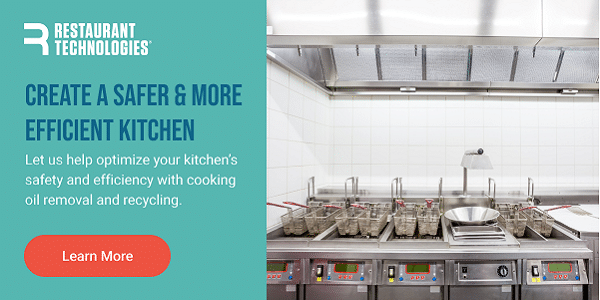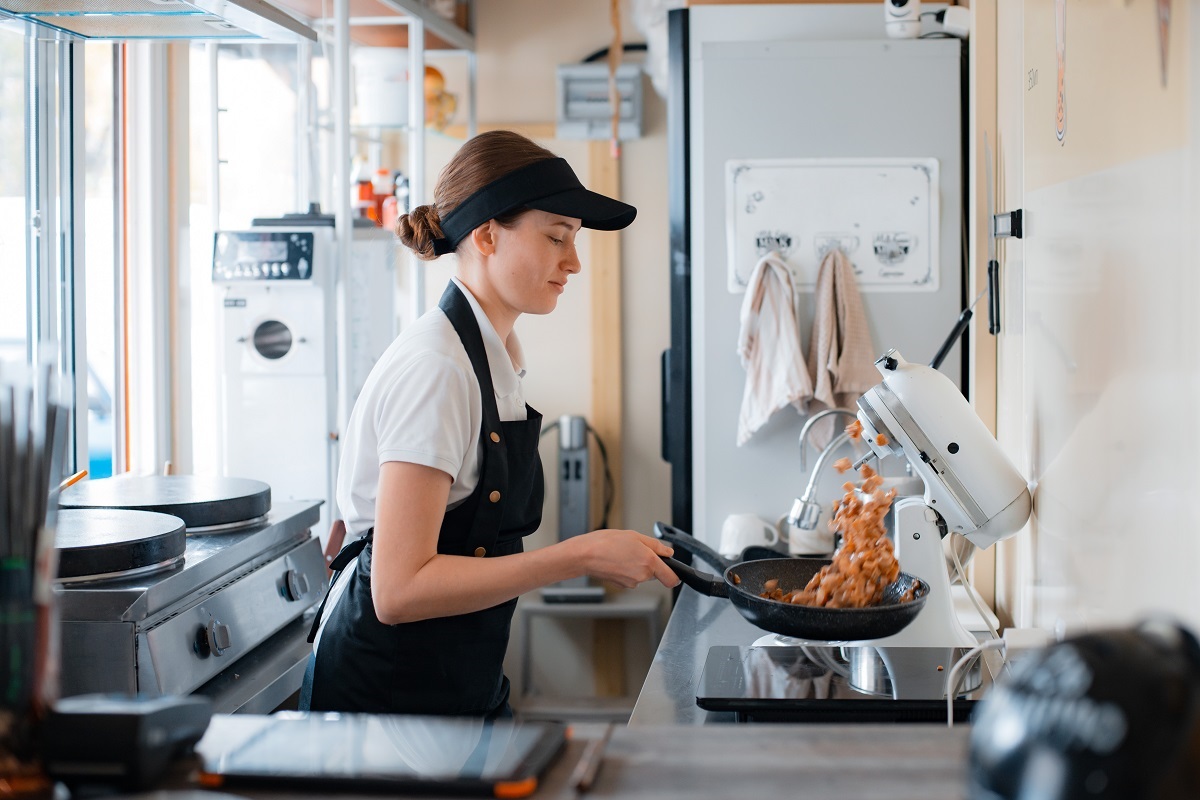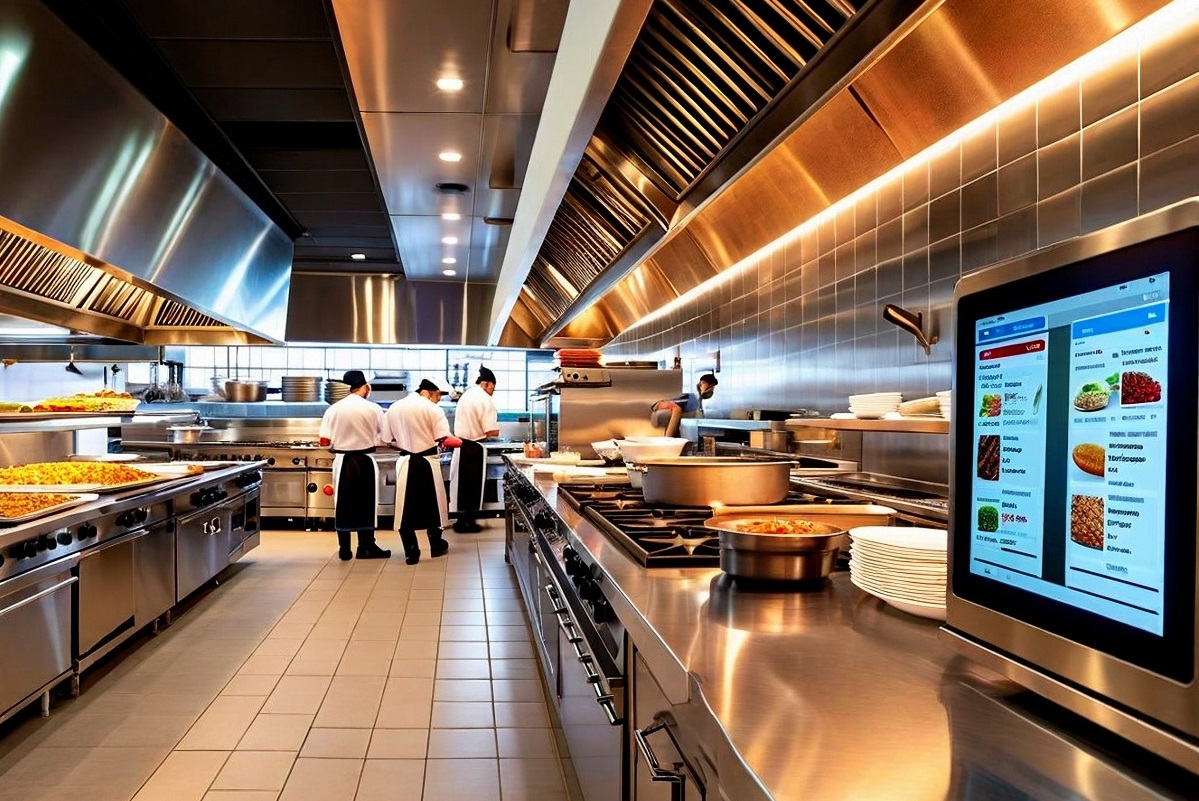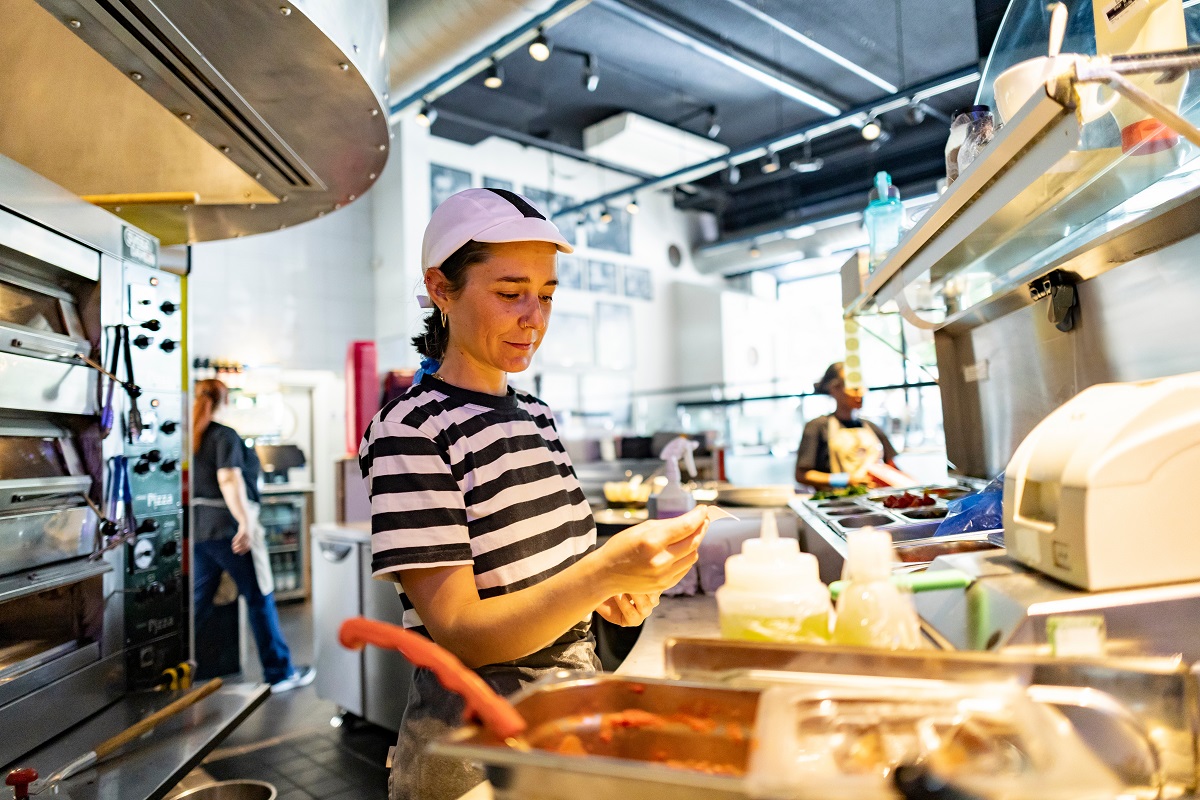Life on the Line: The Realities of Manual Work
The Daily Frustrations of Repetitive Kitchen Tasks
Commercial kitchens thrive on rhythm, but that rhythm is often disrupted by messy, repetitive, and risky tasks that drain time and energy. Whether it’s hauling buckets of fryer oil, cleaning greasy spills, or managing prep schedules by hand, the burden typically falls on the line staff to figure it out in real time.
One of the most common and frustrating pain points is manual fryer oil management, which can often take 30 minutes or more per fryer daily, depending on store volume and staffing. The process exposes employees to burns and slips, and require constant maintenance. But it’s not the only example of outdated kitchen workflows.
Tasks like handwritten food safety logs, verbal communication during rushes, and last-minute inventory surprises all add up to wasted time and increased stress on the people doing the hardest work.
Physical Strain, Time Loss, and Safety Risks
Without the right tools, kitchen staff take on significant physical risks. According to the U.S. Bureau of Labor Statistics, foodservice workers face above-average rates of workplace injuries—from hot oil burns and slip-and-falls to repetitive motion strain from lifting, scrubbing, or rushing without rest.
In fast-paced shifts, these risks are magnified by time pressures. When the kitchen gets busy, safety corners get cut, not out of carelessness, but out of necessity. Technology that reduces these hazards without slowing down the line is not a luxury; it’s a lifeline.

Technology Through a Staff Member’s Eyes
Wanting Safer, Faster, Easier Workflows
Kitchen crews don’t want fancy tech for the sake of it. What they want is support that’s practical, intuitive, and effective, tools that take care of the repetitive, risky, or frustrating parts of the job.
Whether it’s a digital kitchen display system that replaces chaotic ticket printing, or an automated oil management solution that eliminates burns and spills, the ideal technology streamlines workflow while improving safety.
When asked, foodservice employees consistently cite the same top needs:
- Fewer physical hazards
- Better communication tools
- More time for food and service
- Less chaos and confusion during peak hours
Respecting the Realities of Working a Busy Kitchen Shift
The best technology is built with a clear understanding of what it’s like to work in a real kitchen—hot, loud, fast-paced, and unpredictable. If a tool requires too much training or adds friction during a shift, it simply won’t get used.
Good kitchen tech isn’t just designed for the back office or the bottom line. It’s designed to work in tandem with people on the ground, supporting the rhythm of a shift rather than disrupting it.
Whether it’s helping someone carry less, think faster, or clean smarter, the most valuable tech solutions feel like an extra set of hands, not an extra burden.
Automation Isn’t Replacing People, it’s Supporting Them
Making the Hardest Tasks Easier to Handle
From oil management to checklists, technology is most effective when it removes the least rewarding parts of a job. No one wants to spend half a shift hauling oil jugs or chasing down missing items from the walk-in.
Examples of meaningful support:
- Automated fryer oil systems help eliminate burns and spills
- Digital food safety systems log temperatures and reduce paperwork
- Inventory tracking tools reduce wasted steps and restocking stress
- Voice-activated timers and reminders help staff stay on track during chaos
These aren’t “nice to haves”, they’re modern necessities that prevent burnout and keep kitchens running smoothly.
How Small Changes Make Big Differences in a Shift
Even a 10-minute time savings on a repetitive task can free up a team member to prep more efficiently, help on the line, or simply catch their breath.
Less clutter. Less shouting. Fewer spills. One less page to fill out by hand. That’s the kind of shift-level difference that can add up to higher retention, better service, and fewer injuries.
Every small friction you remove in a kitchen matters, especially when multiplied over hundreds of shifts and thousands of employees.
Real Tools That Make Real Shifts Better
Automation in Action: Oil Management and Beyond
One standout example is automated fryer oil management, which eliminates the need for staff to manually drain, filter, and dispose of hot oil. This compelling case study that cites real-life experiences using Total Oil Management from Denny’s, Applebees, Jack-in-the-Box, and Krispy Krunchy Chicken franchises is worth the read.
With systems like Restaurant Technologies’ Total Oil Management, restaurants can:
- Avoid hot oil contact completely
- Save 30+ minutes per fryer daily
- Extend oil life through consistent filtration
- Help Reduce slips, burns, and lifting injuries
But oil isn’t the only frontier for kitchen tech. Other staff-supporting technologies include:
- Kitchen display systems to streamline ticket flow
- Automated waste removal systems to minimize lifting and spills
- Scheduling and task-tracking apps that reduce miscommunication
Each of these tools tackles a small part of kitchen chaos, and helps build a safer, stronger workflow for everyone on shift.
Conclusion: A Stronger, More Impactful Kitchen Is Possible
Technology in kitchens should never be about replacement. It should be about empowering and helping the real people who make food, handle pressure, and keep the restaurant running day in and day out.
By investing in tools that lighten the load, reduce the risk, and streamline the workflow, restaurant leaders can give kitchen teams the environment they deserve.
From fryer oil systems to digital display tools, small changes can lead to a smarter, safer, and more sustainable kitchen culture—one that retains staff, protects their health, and builds better service from the inside out.
Sources:
- U.S. Bureau of Labor Statistics. Injury and illness rates higher in special food services than in broader food services industry https://www.bls.gov/opub/ted/2019/injury-and-illness-rates-higher-in-special-food-services-than-in-broader-food-services-industry.htm
- National Restaurant Association. Existing Tech Can Help Reduce Labor and Supply Costs. https://restaurant.org/education-and-resources/resource-library/existing-tech-and-reasonably-priced-add-ons-can-reduce-labor-and-supply-costs/







